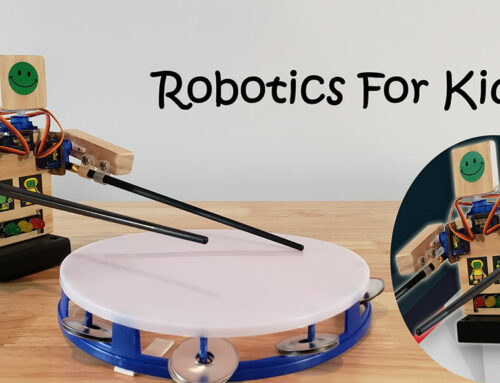Wondering if you are enough to homeschool your almost-high schooler? You definitely do! Here are tips and resources to help you with confidently homeschooling 8th grade.
Whether this is your first time homeschooling or you’re a seasoned pro, we have compiled everything you need to get you started and keep you on track once you begin. We’ve compiled a list of competencies, developmental milestones, field virtual trip ideas and more.
Being 13 years old is a big year in the growth of your child. Your 8th grader will need a lot more sleep right now with all the changes going on in their body. These changes will show a little clumsiness due to fluctuations in height and weight. Watch out for peer pressure as your child is now more in tune to the world around them and their desire to fit in yet desires to be an individual at the same time. Thankfully, homeschool has been proven by at least one study to positively circumvent peer pressures to try or abuse substances in adolescents that arise between ages 12-17.
Communication is key right now. Your child may no longer take things at face value and may begin questioning everything around them, including the decisions you make as a parent and the events that are happening in our world. These milestones are expected and are setting the course for their teen years.
Homeschooling curriculum in the state of Texas must include the five basic subjects of reading, spelling, grammar, mathematics, and good citizenship. Science, history, and social studies are also included for you. Not in Texas? Check out state requirements for homeschooling 8th grade in your state.

Suggested School Supplies for 8th Grade
https://www.greatschools.org/gk/articles/middle-school-back-to-school-supply-list/
- Pencils
- Pencil sharpener
- Eraser
- Pens
- Lined paper, spiral notebooks and/or composition notebooks
- Index cards
- Binders (if needed)
- Folders
- Colored pencils
- Highlighters
- Paints (tempera and watercolor)
- Paintbrushes
- Paper for painting
- Construction paper
- White board
- Dry erase markers
- Ruler
- Protractor
- Scissors
- Stapler
- Glue sticks
- White glue
- Tape
- Graphing calculator (if needed)
- Bookmarks (for longer books)
- Globe
- Wall maps of the world and the United States
- Library card
- 3-hole punch
- Computer supplies (as needed; paper, ink cartridges).
8th Grade Milestones by Subject

Language Arts for 8th Grade
- Consistent and accurate use of standard English conventions such as subject verb agreement, verb tenses, capitalization, etc.
- Effectively uses punctuation such as commas in nonrestrictive phrases and clauses, semicolons, colons, and parentheses
- Able to correct the spelling of commonly confused words such as its/it’s, affect/effect, there/their/they’re, and to/two/too
- Uses print or digital resources to determine the meaning, syllabication, pronunciation, word origin, and part of speech
- Independently uses context clues within a sentence or paragraph to understand the meaning of words
- Actively participates in discussions
- Able to follow and gives complex oral instructions with multiple steps
- Uses his or her imagination to plan, organize, and tell stories
- Understands the importance of communication in social, academic, civic, and professional situations
- Employs proper eye contact, speaking rate, volume, enunciation, and gestures to effectively convey a speech
- Differentiates between paraphrasing and plagiarism when using source materials
- Able to use source materials effectively and ethically for written, oral, or multimodal presentations
- Effectively uses genre characteristics to compose literary texts such as personal narratives, fiction, multi-paragraph essays and poetry
- Able to compose argumentative texts
- Composes correspondence in a business or friendly tone that reflects an opinion, registers a complaint, or requests information
- Able to paraphrase and summarize texts in ways that maintain meaning and logical order
- Reads independently for a sustained period of time and with purpose. For enjoyment, to learn a new skill, etc…
Writing Skills Checklist for 8th Grade
- Writes legibly in print and cursive
- Writes to express feelings, tell stories and summarize information
- Able to follow written directions and write effective directions
- Understands how to use reference materials, takes notes, and prepares written reports
- Demonstrates clarity in writing with beginning, middle, and end of stories
- Uses grammar and punctuation correctly and effectively in writing
- Can self and peer edit written works
- Able to write based on the needs of the audience or assignment by changing sentence structure, vocabulary, and voice.

History and Social Studies for 8th Grade
- Familiar with the history of the United States from the early colonial period through Reconstruction
- Able to identify the role of the U.S. free enterprise system, capitalism and free market system
- Studies and understands the Declaration of Independence including memorization of: “We hold these Truths to be self-evident, that all Men are created equal, that they are endowed by their Creator with certain unalienable Rights, that among these are Life, Liberty and the Pursuit of Happiness–That to secure these Rights, Governments are instituted among Men, deriving their just Powers from the Consent of the Governed,”
- Understands the reasons for English, Spanish, and French exploration and colonization of North America
- Understands the political, economic, religious, and social reasons behind the establishment of the Thirteen Colonies
- Analyzes the causes of the American Revolution and can explain important events including declaring independence; fighting the battles of Lexington and Concord, Saratoga, and Yorktown; enduring the winter at Valley Forge; and signing the Treaty of Paris of 1783
- Recognizes and is able to share about important figures during the American Revolution
- Able to explain the origin and development of American political parties
- Understands and is able to explain the individuals, issues, and significant events of the Civil War
- Understands the effects of Reconstruction on the political, economic, and social life of the nation
- Able to locate places and regions related to the events and people of the colonial period, Revolutionary War, Civil War and Reconstruction
- Understands the impact of religion and religious freedom on the American way of life including its influences on social movements
- Able to explain the effects of technology and scientific discoveries on the economic development and daily life in the United States
- Understands the basic geography and physical characteristics of areas in the United States, as well as the effects of human modification
- Able to create written, oral and visual presentations to solidify learning.
Math Checklist for 8th Grade
- Applies math skills to everyday life and understands how they apply to business, society and life
- Fluently adds, subtracts, multiplies, and divides rational numbers
- Demonstrates mathematical understanding of ideas by using precise mathematical language verbally or in writing
- Understands proportionality
- Uses geometry to describe or solve problems
- Dives more into personal financial literacy to become a knowledgeable consumer and investor including calculating the costs of different methods of repaying loans, saving for college, and how investing small amounts of money will accrue over time
- Uses basic algebra skills to solve for the unknown such as 9+x=11
- Uses coordinates to locate points on a grid, also known as graphing ordered pairs
- Able to work on fractions, percentages and proportions
- Uses formulas to solve more complicated problems
- Uses select tools including real objects, manipulatives, paper and pencil, technology, mental math, estimation, and number sense to solve problems
- Able to convert units within a measurement system, including the use of proportions and unit rates
- Understands square roots up to 225
- Understands and can find the coordinates for slope.

Science Experiments and Skills for 8th Grade
- Understands the structure of atoms
- Able to interpret the Periodic Table
- Understands the relationships between force, motion, and energy
- Able to conduct laboratory and field investigations and uses safe practices to do so
- Able to use a variety of tools for scientific inquiry and uses them correctly
- Communicates the cyclical movements of the Sun, Earth, and Moon and can demonstrate how the tilted Earth rotates on its axis, causing day and night, and revolves around the Sun, causing changes in seasons
- Understands the lunar cycle and its effects on ocean tides
- Familiar with the components of our universe, including stars, nebulae, and galaxies and knows the Sun is a medium sized star closer to Earth than any other star and is located in the Milky Way galaxy
- Understanding of the plate tectonic theory
- Recognizes the interdependence between organisms and populations in an ecosystem and how they may compete for biotic and abiotic factors
- Recognizes the human impact can affect different ecosystems
- Explores the effects of short and long-term environmental changes on organisms and subsequent populations.
5 Science Experiments for 8th Grade
What better way to enhance understanding of our natural world than to incorporate science into your 8th grade school day? Here are five fun and easy experiments for you and your budding scientist:
- PVC Rocket Launcher
- NASA’s BEST Activity Educator Guide
- Build your own world with Disney Imagineers
- How fast are our eyes? Intro to Animation
- Create a Plant Light Maze – How a plant’s environment affects its growth

Good Citizenship Lesson Plans for 8th Grade
Being a good citizen not only means understanding your right to vote and the privileges of citizenship, but also respect for our planet, good stewardship and understanding the world around us.
Below are ideas to assist you and your young learner in understanding the relationship among individual rights, responsibilities, duties, and freedoms in societies with representative governments and why civic participation is so important. If you are in need of resources and lesson plans to fulfill this requirement, consider joining THSC. We offer our “Lone Star Study” guide as a free download for our members.
Here are a few ideas:
- Become involved in events and initiatives such as Capitol Days sponsored by THSC.
- Learn about the electoral process in local, state and national elections.
- Register to vote and vote! Better yet, take your child with you to see the voting process. Children under the age of 18 are allowed to go with you and even go inside the booth with you in every state in the United States. In Texas, one child under the age of 18 is allowed to accompany a parent.
- Compare the principles and concepts of the Texas Constitution to the U.S. Constitution, including the Texas and U.S. Bill of Rights. How are they the same? How are they different?
- Learn the words together of our most beloved patriotic songs. “The Star Spangled Banner,” “God Bless America,” and “Texas, Our Texas” offer a rich history in the lyrics and the stories behind them.
- Discover the meaning and history of the Pledge of Allegiance and the Pledge to the Texas Flag.
- Write a letter to your elected officials in support or against legislation affecting lives within your community. Start a letter writing campaign to get others involved!
- Attend city council meetings as a family and discover the workings of your town.
- Volunteer at a food pantry, animal shelter or other organization. Many places allow younger children to participate with a parent.
- Learn about local and national non-profit organizations and how each serves your community such as the Boys and Girls Clubs of America or The Salvation Army.
- Attend rallies of causes you believe in as a family.
- How is your town significant in Texas history? Find out! Online research, a visit to your local library or a chat with a local historian will uncover the rich history of the place you call home.
- Discover how each of us affects the environment from how much water we use to how much trash we produce. Then, discuss and implement ways you as a family can lessen your impact.
- Learn about recycling in your area. What items are recyclable and where and how do you recycle them? Discuss as a family why recycling is so important.
- Keep our state clean by picking up litter everywhere you go.
- Did you know that flags from six nations have flown over our state? Learn which countries played a role in our history and why.

13 Year-Old Developmental Milestones
All children develop at different rates. However, certain skills are easily identified by the age of thirteen. If you have concerns about your child’s development after reviewing this list, please discuss those with your healthcare provider.
13 Year-Old Gross Motor Skills
- Frequent growth spurts
- May be more mature in some topics and immature in other topics such as physical, emotional and mental actions due to uneven body and brain growth
- Coordination may decrease with increase of growth spurts
- Reaction times improves, contributing to motor skill development
- Shows increased awareness of physical skills in all areas and is able to coordinate movements like dribbling and shooting a basketball, dance or martial arts with better coordination
- Overall increase in large muscle development and strength
- Increased hand-eye coordination.
13 Year-Old Fine Motor Skills
- Writing is fluid and less of an effort
- Writing speed increases
- Continues to increase skills while performing tasks such as folding clothes, typing, writing and drawing
- Drawings become more sophisticated with depth cues through overlapping objects, diagonal placement, and converging lines
- Fine motor skills used in team sports increase.
Language Development and Comprehension for 8th Grade
- Uses voice inflection to add meaning to sentences
- Asks relevant questions
- Uses complex sentences and different types of sentences to express ideas clearly
- Able to memorize information more easily
- Begins to not take everything at face value and may begin to question authority
- Contributes meaningfully and understands social etiquette in conversations
- More aware of others’ perceptions
- Begins to understands body language cues and tone of voice as indicators of mood
- Able to shift conversations based on increased awareness of the listener’s needs
- Uses humor and even sarcasm effectively.

12 Great Books or Series Homeschool Reading List for 8th Graders
Find these books at your local library or find them at any bookstore. If you shop on Amazon, please visit Amazon Smile and choose Texas Home School Coalition as your charity of choice!
We also recommend checking with a site such as Redeemed Reader or Plugged-In as to the appropriateness of any particular book for your child and their personal maturity level.
Another wonderful place for book recommendations is The Read-Aloud Revival, which features booklists and reviews for all kinds of books and reading levels.
- The Giver by Lois Lowry. This 1994 Newbery Medal winner tells the story of twelve-year old Jonas whose world of conformity and contentment changes when he’s given the assignment as the Receiver of Memory. What happens when he begins to understand the dark, complex secrets behind his fragile community?
- To Kill a Mockingbird by Harper Lee. One of the most beloved books of the 20th century, this novel by Harper Lee is a must read in any homeschool classroom. Told through the eyes of a six-year-old girl nicknamed Scout, this novel tells us of her father, a crusading local lawyer who risks everything to defend a black man unjustly accused of raping a young white woman.
- The Call of the Wild by Jack London. Set in Yukon, Canada during the 1890’s, 140-pound St. Bernard–Scotch Collie mix named Buck is the protagonist. Once living in the lap of luxury in California, Buck is stolen from his home and sold as a sled dog. This book traces his adventures and the tragedies associated with “the call of the wild.”
- The Adventures of Huckleberry Finn by Mark Twain. This 19th-century novel has been a classic for generations. Follow the journey of Huck Finn and Jim, a runaway slave, as they escape down the Mississippi River. Be aware that this book contains racial language that is considered highly inappropriate today, though it is used to portray racism in a negative light.
- Across Five Aprils by Irene Hunt. This 1965 Newbery Award Winner tells the story of the Creighton family during the Civil War. The author used stories she heard from her grandfather who, like the protagonist Jethro, was nine when the war began. Published in 1965, this novel is often thought of as the first book in the Young Adult genre.
- A Wrinkle In Time by Madeleine L’Engle. First published in 1962, the book has won the Newbery Medal, the Sequoyah Book Award, the Lewis Carroll Shelf Award, and was runner-up for the Hans Christian Andersen Award. The main characters—Meg Murry, Charles Wallace Murry, and Calvin O’Keefe—embark on a journey through space and time, from universe to universe, as they endeavor to save the Murry’s father and the world. The novel offers a glimpse into the war between light and darkness, and goodness and evil, as the young characters mature into adolescents on their journey.
- Fever 1793 by Laurie Halse Anderson. Set in in Philadelphia in 1793, this historical fiction novel focuses on the yellow fever epidemic, and how lives were ended and changed during a mass pandemic in American History.
- Heat by Mike Lupica. Newly orphaned after his father led their escape from Cuba, 12-year old Michael and his 17-year old brother Carlos must dodge questions and the foster care system to see Michael’s dreams come true of leading his team all the way to the Little League World Series. With a pitching speed of 80 mph, no birth certificate and no parent to prove his age, how will he convince them he’s really 12 years old?
- Hatchet by Gary Paulsen. When 13-year old Brian Roberson must survive alone in the wilderness after a plane crash, his only companions are the thoughts of the horrible secret he knows about his parents divorce and the hatchet his mother gave him before he left.
- “Anne of Green Gables” series by Lucy Maud Montgomery. Since its publication, Anne of Green Gables has been translated into at least 36 languages and has sold more than 50 million copies, making it one of the best selling books worldwide. The novel recounts the adventures of Anne Shirley, an 11-year-old orphan girl, who is mistakenly sent to two middle-aged siblings, Matthew and Marilla Cuthbert, who had originally intended to adopt a boy to help them on their farm in Avonlea on Prince Edward Island, Canada.
- The Hobbit and The Lord of the Rings trilogy by J. R. R. Tolkien. Drawing from his extensive knowledge of philology, colorful myth, and folklore from a vast array of cultures, these books are the saga of a group of sometimes reluctant heroes who set forth to save their world from malevolent forces. They teach students how to do what is right regardless of the odds against them and to fight evil, whatever form it presents itself in.

10 Awesome Homeschool Field Trip Ideas for 8th Graders
Everyone loves a field trip! Don’t feel you have to leave your town, your neighborhood, or even your own home to enjoy one. Be creative and your next stroll down the street can be an educational experience.
- Government: THSC Capitol Days are one-day, hands-on events that allow homeschooling families to fully participate in the state legislative process. These events give the opportunity to defend the rights of homeschool families in Texas, meet representatives and staff and actually help pass a law. A free grade-specific tour is available at our Texas state capitol, which includes history, architecture and the legislative process.
- First Responder Appreciation: Police, fire and EMS stations are located throughout most cities. Locate the one closest to your house and give them a call! Many are ready for tours, and if one isn’t available, gather up some goodies and some thank you cards as a gift to drop off to show them how much they are appreciated.
- Job Fair: 8th grade means your child may begin forming opinions on a career or college path. Visit a farm, watch a lawyer in court, chat with a pastor or priest or cook alongside a chef. Electricians, college professors, nurses and more are available to show you the ins and outs of their careers and help guide an eager learner on a possible career choice.
- Historical Sites: Make homeschooling real! Bring your homeschool studies to life by visiting the cities and towns you are learning about each day. That’s the freedom of homeschooling! Discover places close to home or go on a road-trip tour through Texas and learn along the way.
- Museums: If you have an interest, there is a museum for you in Texas! Now, many museums are offering virtual tours you can enjoy from the comfort of your home. The Frontiers of Flight Museum at Dallas Love Field offers online tours and stories of its exhibits including the “Titanic of the Skies,” a history of the Hindenburg tragedy and even a Google Earth style, street view of its interior exhibits for you to navigate through.
- Sports: Sports fans! Did you know that tours are available at your favorite stadiums throughout the state? Minute Maid Park, home of the Houston Astros, and AT&T Stadium, home of the Dallas Cowboys, offer tours and lesson plans to educators. The Texas Sports Hall of Fame in Waco houses 35,000 square feet of sports history including more than 300 Texas legends inducted into the Hall of Fame.
- Libraries: Teen groups, anime meetups, coding camps and more are held throughout the year at local libraries throughout our state. Check with your local library and see what activities you can plan ahead to take advantage of free programs and educational opportunities.
- Theater/Music/Art: Grab a blanket and head to a free outdoor concert, stroll through a sculpture garden or get those must see tickets to the latest show. If you prefer virtual performances, National Public Radio (NPR) is offering an updated multi genre list of concerts and performances here.
- Get Outside: Our Texas state parks offer opportunities throughout the year for hiking tours, educational programs, scavenger hunts and more. Feel like staying closer to home? Go for a walk around your neighborhood, visit a pond, discuss the different types of wildlife, or learn about the insects, birds and other furry inhabitants of your own backyard! Noticing nature opens a world of conversations with your preteen. Need a road trip? Head to our Texas coast and see the birds and creatures that make up this diverse ecosystem. A state as big as ours has endless possibilities!
- Living History: Groups across the state work to ensure historical accuracy and diverse programming, such as the Crossroads of Texas Living History Association and the Texas Living History Association. Museums and special events offer presentations and workshops that keep the craftsmanship, allure and heirloom skills of our past available for your family to learn today. The Barrington Plantation State Historic Site is one of them. Located in the Washington-on-the-Brazos State Historic Site, this living history farm takes visitors back to 1850 to the home of Dr. Anson Jones, the last President of the Republic of Texas.
For more Texas road trip ideas and beyond, check out our road schooling page.
We hope you found this helpful in preparing to homeschool 8th grade. Have fun this year!
We believe homeschooling is one of the best models for educating children, which is why we support families with encouragement and practical resources like you found in this article.
Won’t you join us in making these resources available to homeschooling families by becoming a member?



